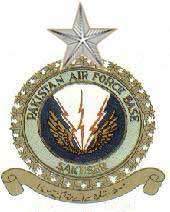|
On the outer fringes of the Punjab's Soan valley lies a 4,992 ft peak called Sakesar which used to be the summer headquarters for the deputy commissioners of three districts - CampbelIpur (now Attock), Mianwali and Sargodha. In view of Sakesar's ideal location and height, the PAF selected it in the late-50s as the site for a high powered radar which would provide air defence cover for the northeastern part of the western wing.
In 1960, a radar installation was commissioned at Sakesar for its role as a master GC1 station. The base comprised a sector operations centre SOC and a ground controlled interception element. In 1961, it was formally opened as a PAF station and Wing Commander Amanullah Khan was appointed as its first station commander.
During the 65 war, Sakesar played a vital role in the battle for air superiority which was fought mainly from Sakesar's SOC, under the personal supervision of Air Commodore Masroor Hosain, the AOC Air Defence. The base was at that time commanded by Wing Commander M Zakria Butt. The GC1 controllers who distinguished themselves during the decisive air defence battles were Squadron Leader Anwar Ahmed Khan, Flight Lieutenant S Waheed Nabi, Flight Lieutenant Farooq H Khan and Flight Lieutenant Ejaz A Khan.
In the 71 war too Sakesar was called upon to fulfil its assigned role. This time the base was commanded by Group Captain N Rehmat Khan, who was also Sector Commander North. PAF Sakesar was able to make important contribution to the air operations of that war despite being attacked by the IAF several times. Its men rose magnificently to the challenge and repaired the damaged equipment in record time to keep the base fully operational.
In 1972, certain organizational changes and the consequent modernization of the air defence system affected the status of Sakesar. In 1975, the Air Defence School was shifted from Korangi Creek to the base.
Sakesar has become much greener over the years with dedicated plantation and gardening efforts. The accommodation situation is considerably better too and despite the extensive construction of modern technical facilities the air base retains the appearance of a hill station. The weather is mild throughout the year, although only once in recent memory the base was covered by 3 feet of snow in 1972!
|

